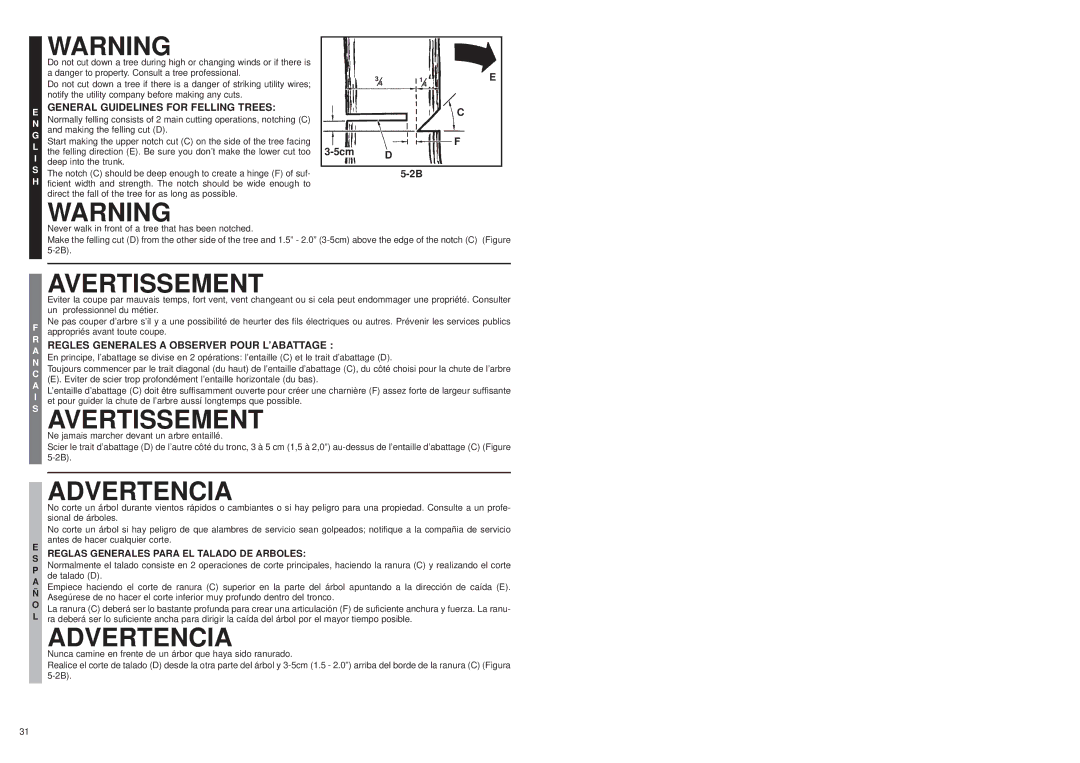MS1015P specifications
The McCulloch MS1015P is a versatile and user-friendly chainsaw designed for both novice and experienced users alike. Renowned for its robust performance, the MS1015P offers an outstanding blend of power, efficiency, and advanced technology, making it an ideal tool for a variety of cutting tasks, from trimming branches to felling small trees.One of the standout features of the MS1015P is its powerful 1.0 kW engine, which delivers enough power to tackle tough jobs while maintaining a lightweight design for easy maneuverability. The engine is designed to provide quick starts, thanks to its reliable recoil start system, ensuring that users can get to work without unnecessary delays.
The MS1015P is equipped with a 30 cm (12 inch) guide bar, which strikes a perfect balance between cutting capacity and ease of use. This size makes it suitable for both agricultural and domestic tasks, allowing users to perform detailed pruning as well as handle larger cutting jobs with ease. The accompanying chain is designed to deliver smooth cuts, reducing kickback and vibrations, which significantly enhances user comfort and safety during operation.
Another critical aspect of the MS1015P is its efficient clean technology. It boasts low emissions and reduced fuel consumption, making it an environmentally friendly option for those who are conscious about their ecological footprint. This technology not only helps in minimizing environmental impact but also allows for longer periods of use between refueling.
Ease of maintenance is also heavily considered in the design of the MS1015P. The automatic chain lubrication system ensures that the chain is continuously lubricated during use, reducing wear and prolonging the lifespan of both the chain and the guide bar. This feature minimizes the need for frequent adjustments and downtime, allowing users to focus on their cutting tasks.
Safety features are paramount in the design of the MS1015P. The chainsaw includes a chain brake for quick stopping in case of kickback and an adjustable vibration dampening system that enhances user comfort by reducing fatigue during extended use. The lightweight construction, combined with these safety features, makes the MS1015P a reliable choice for anyone seeking a dependable chainsaw for various applications.
In conclusion, the McCulloch MS1015P stands out in the chainsaw market due to its combination of power, efficiency, user-friendliness, and safety. Whether for home gardening or more demanding forestry tasks, this chainsaw offers all the necessary features to get the job done effectively.

